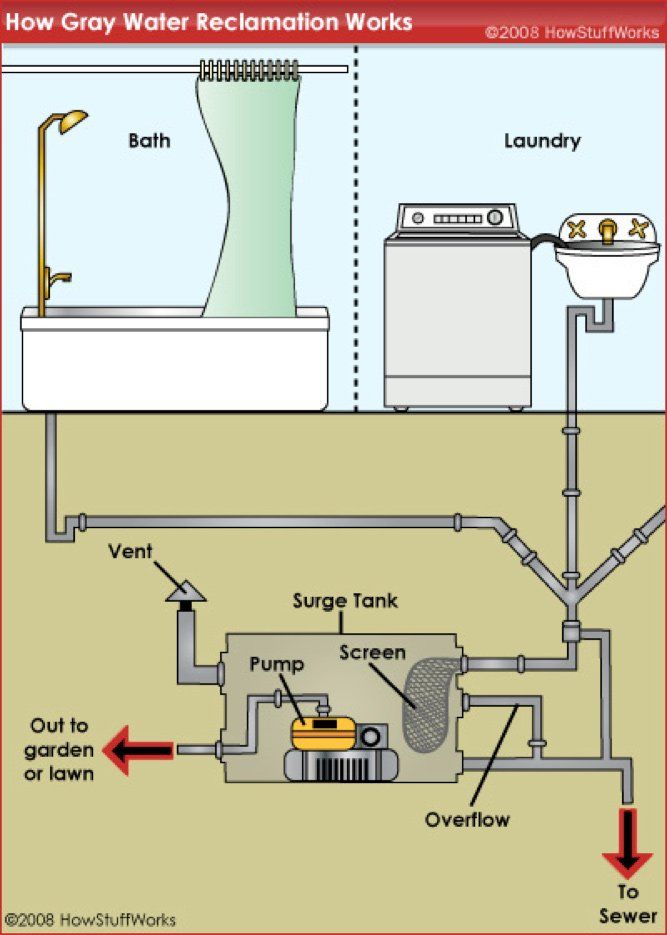Eco-Friendly Products
Low-Flow Faucets Low-Flow Showerheads Low-Flush Toilets Advanced Plumbing
Grey Water Recycling
Recycling grey water reduces the burden on urban sewage treatment and protects a dwindling natural resource. While the particulars of a grey water diversion or filtration system can vary greatly, several basic steps are commonly used.
What is grey water?
The term “grey water” refers to domestic wastewater drained from sinks, showers, bathtubs and washing machines. Grey water is a valuable resource that can be filtered, treated and reused.
While the average person in a developing country will consume about 20 to 30 litres of water per day, research shows that the average Canadian generates over 300 litres of waste water each day. This statistic makes Canadians one of the highest per capita consumers of water on the planet.
The diagram shows water consumption for a typical Canadian household. Note: the amount of water from the bathroom sink and shower is almost the same amount as all of the water used in toilet flushing.
Grey water recycling
The collection of grey water requires a double-piped drainage system throughout the home. The water must then be filtered and purified for reuse.
Residential grey water recycling systems are not something that will offer a noticeable return on investment through savings on utility bills today, but with rates going up every year and communities facing pressure on their wastewater treatment facilities, governments have started to subsidize and even legislate changes that benefit grey water system installation. (California, as an example, is suffering water shortages and is leading the way on innovative water conserving solutions.)
A note on grey water: While grey water can be reused, water from kitchen sinks or dishwashers is generally not recycled as it contains substantial amounts of grease and organic matter. Water from toilet flushing, known as black water, is obviously excluded as well.
It’s not that easy to make the right choice.
The ideal toilet will conserve water
AND clean the bowl with each flush.
We make it easy.






